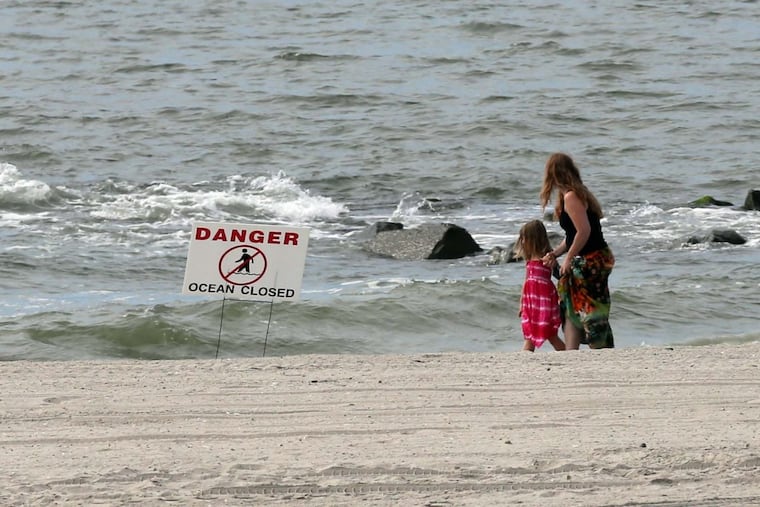Rip currents blamed for nearly 40 deaths in N.J., Del., in last two decades
All but two of the 39 victims were male, according to the National Weather Service study.

Like fudge, beach tags, and traffic jams, warnings about "rip currents" have become such staples of summer at the Shore that some folks don't heed them much.
But in addition to the countless water rescues, a study produced by the National Weather Service Office in Mount Holly, and updated this week, underscores that they, indeed, can be fatal.
It documents that since 1998 a total of 39 people have drowned as result of rip currents, nasty vectors of water that can carry people out to sea in a hurry, at New Jersey and Delaware beaches.
Not surprisingly, it found that the majority, 22, occurred between 5 and 7 p.m., when lifeguards tend to be off duty.
All but two of the victims were male.
Sunday was the deadliest day of the week, with 14 drownings, according to the study, assembled by weather-service interns and drawn to our attention by meteorologist Walt Drag, who was the research adviser
Our Amy S. Rosenberg wrote a fine piece about the after-hours beach culture a few years back. You can find it in the philly.com archives.
So just what are rip currents?
They are funnels of rapidly seaward-moving water, with speeds up to 8 feet per second, that result from the interactions of waves, currents, and surf conditions.
They can be long-term features, or form guerrilla-style. They can be affected by shore structures such as sand-catching groins, or navigational jetties.
And it so happens that in its 150-year battle with the sea, New Jersey might have the most-engineered beaches in the nation.
The weather service posts rip-current forecasts, and guarded beaches should provide ample warning of the presence of rip currents.
But just in case, keep an eye out for churning water, foamy water moving quickly out to sea, or breaks in wave patterns.
If it so happens you get caught in one, experts warn not to swim against the current, but try to swim out of it, heading toward shore at an angle.
"Rip current" is not to be confused with "undertow" or "longshore current."
The former is the wave backwash that ripples past your ankles, and the latter is the force that can gradually drag you a block or more from the site of your beach blanket.
Getting caught in a longshore current can be disorienting; getting caught in a rip current can be life-threatening.